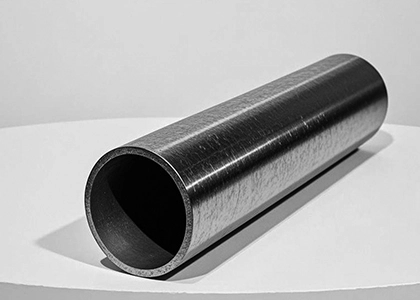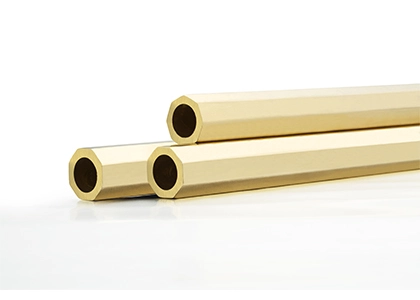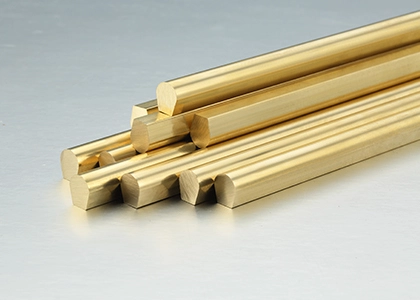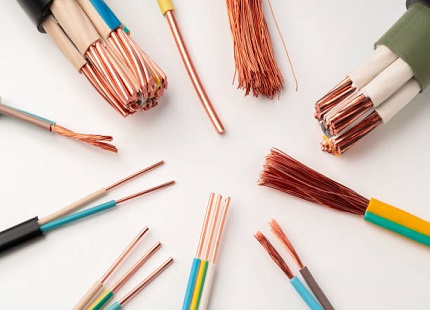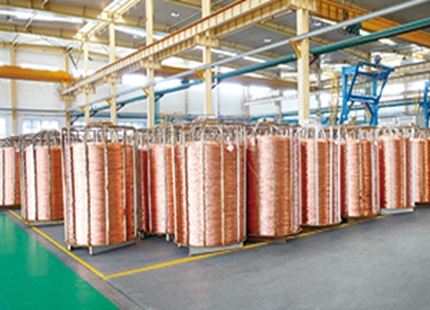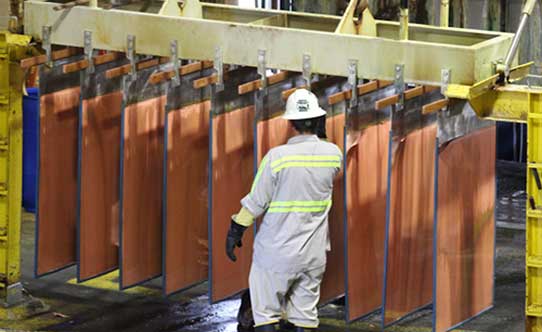Designation and Standards
International Common Grades:
China: TP2 (GB/T 1527-2017, GB/T 1528-2019)
America: C12200 (ASTM B88)
Japan: C1220 (JIS H3300)
European Union: CW024A (EN 1172)
International Standard: ISO 1337
Product Features
Deoxidized Copper Characteristics: Contains trace phosphorus (0.015-0.040%), strong deoxidation ability, and excellent welding performance.
Corrosion Resistance: Resistant to high-temperature oxidation and steam corrosion, suitable for condensers, heat exchangers, and other humid/high-temperature environments.
Workability:
Good cold working properties, can be made into thin-walled tubes or complex shapes.
For hot working, temperature control is required (annealing temperature: 500-600°C) to avoid grain coarsening.
Conductivity: Slightly lower than T2 copper (electrical conductivity ≥ 90% IACS), but meets general power transmission needs.
Common Product Forms and Dimensions
Product Form | Dimension Range | Applicable Standard |
Tube | Outer Diameter: 5-219mm, Wall Thickness: 0.5-10mm | GB/T 1527-2017 |
Bar | Diameter: 10-150mm | GB/T 1528-2019 |
Plate/Strip | Thickness: 0.5-50mm, Width ≤1000mm | GB/T 2059-2017 |
Wire | Diameter: 0.5-20mm | GB/T 14953-2017 |
Irregular shape | Custom dimensions based on customer drawings | Agreement Technical Conditions |
Note: Tubes are the main form and are widely used in refrigeration and heat exchange fields. |
Chemical Composition (GB/T 1527-2017)
Component | Cu+Ag | Pb | Sb | Bi | P | Fe | S | Other Impurities |
Content (%) | ≥99.90 | ≤0.005 | ≤0.005 | ≤0.001 | 0.015-0.040 | ≤0.05 | ≤0.005 | ≤0.1 |
Physical Properties
Property | Value |
Density | 8.89-8.94 g/cm³ |
Conductivity | 90-93% IACS |
Resistivity | 0.0184-0.0190 μΩ·m |
Thermal Conductivity | 350-370 W/(m·K) |
Thermal Expansion Coefficient | 17.5×10⁻⁶/K |
Melting Point | 1083°C |
Mechanical Properties (Reference GB/T 1527-2017)
State | Tensile Strength (MPa) | Elongation (%) | Vickers Hardness (HV) |
Hard (Y) | ≥275 | ≥15 | 80-110 |
Annealed(M) | ≥200 | ≥45 | 50-70 |
Note: Annealed tube is mainly used for bending and forming, while hard tube is suitable for pressure-bearing applications. |
Core Advantages
Hydrogen Embrittlement Resistance: Phosphorus elements inhibit hydrogen penetration, reducing the risk of hydrogen embrittlement.
Welding Performance: Suitable for flame welding, induction welding, and other high-precision welding processes.
High-Temperature Oxidation Resistance: Long-term operating temperature up to 200°C (short-term up to 300°C).
Product Applications
Refrigeration Industry: Air conditioning copper tubes, refrigerator condenser tubes, refrigerant transport tubes.
Heat Exchange Systems: Boiler heat exchange tubes, seawater desalination equipment.
Building Piping: Hot and cold water pipes, gas transport pipes.
Electrical Equipment: Medium and low-voltage cable conductors, busbars.
Processing Notes
Welding Process: Prefer phosphorus-containing solder (e.g., BCuP series), avoid oxidation.
Annealing Control: Soft material annealing temperature ≤ 600°C, and hard material should avoid repeated annealing.
Surface Treatment: After acid pickling, thoroughly rinse to prevent residual phosphides from causing corrosion.
Frequently Asked Questions
Q: What is the main difference between TP2 and T2 copper?
A: TP2 contains phosphorus (0.015-0.04%), offering better welding properties but slightly lower conductivity. T2 has higher purity but is more prone to hydrogen embrittlement.
Q: Can TP2 copper tubes be used in drinking water systems?
A: They can be used if they comply with the GB/T 18033-2017 standard but must pass migration testing for lead, arsenic, and other elements.
Q: What happens if the phosphorus content exceeds the standard?
A: Conductivity significantly decreases, and it becomes prone to cracking during cold working, so it must be strictly controlled below 0.04%.
Standards Reference
Tubes: GB/T 1527-2017, ASTM B88
Bars: GB/T 1528-2019, JIS H3300
Welding Standards: GB/T 985.1-2008

 English
English 한국어
한국어 français
français Deutsch
Deutsch Español
Español italiano
italiano العربية
العربية tiếng việt
tiếng việt Türkçe
Türkçe ไทย
ไทย 中文
中文
